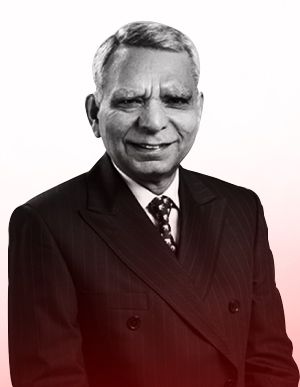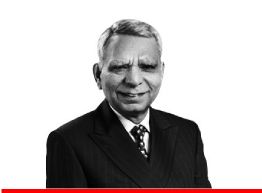OUR MAXIM
The Board of Directors (Board) deems that endorsing quality norms and beliefs of good governing practices in the Bank provide a solid bedrock for sustainability, a long-haul value creation for all of its stakeholders and a culture of transparency. The Board entrusts its powers through its leadership in the hierarchy eulogising elevated standards of corporate governance to direct and supervise the conduct of the business and the affairs of the Bank ethically and effectively.

GENERAL
GENERAL
AfrAsia Bank Limited (the “Bank” or “AfrAsia Bank” or “ABL” or “AfrAsia”) has, through its Board of Directors, taken the required steps to ensure compliance with the principles set out in the National Code of Corporate Governance and explained how these principles have been applied to with the exceptions of those disclosed in the “Statement of Compliance” on page 73 along with underlying principle behind the non-compliance.
Further to a re-constitution of its Board of Directors post year end, some resignations and appointments were noted post year end for which the details can be found throughout the report.
Disclosures pertaining to the eight principles of the Code have been made in different sections of the Annual Report, as outlined below:
| Principles of the Code | Relevant sections of the Annual Report |
|---|---|
| Principle 1: Governance Structure | Corporate Governance Report |
| Principle 2: The Structure of the Board and its Committees | Corporate Governance Report |
| Principle 3: Director Appointment Procedures | Corporate Governance Report |
| Principle 4: Director Duties, Remuneration and Performance | Corporate Governance Report |
| Principle 5: Risk Governance and Internal Control | Corporate Governance Report and Risk Management Report |
| Principle 6: Reporting with Integrity | Corporate Governance Report, Sustainability Report and Section B – Financial Statements |
| Principle 7: Audit | Corporate Governance Report |
| Principle 8: Relations with Shareholders and Other Key Stakeholders | Corporate Governance Report |
PRINCIPLE ONE – GOVERNANCE STRUCTURE
PRINCIPLE ONE – GOVERNANCE STRUCTURE
OUR GOVERNANCE FRAMEWORK AND ACCOUNTABILITIES
ABL, a public company incorporated on the 12th of January 2007, holds a banking licence which was issued on the 29th of August 2007. Its core banking and transactional capabilities are in Mauritius along with a representative office in South Africa. It is a Public Interest Entity (“PIE”) as per the Financial Reporting Act 2004 and adheres with the requirements of the relevant rules, regulations and legislations.
The Bank operates under the aegis of a unitary Board, collectively geared in guiding and directing the organisation to take the necessary steps to adhere, to the best of the Board’s knowledge, to all legal and regulatory requirements, such as:
- The eight principles issued by the National Committee on Corporate Governance in its “National Code of Corporate Governance for Mauritius (2016)” (the “Code”);
- The Banking Act 2004 (amended August 2020) issued by the Bank of Mauritius (“BOM”);
- The “Guidelines on Corporate Governance 2001” (revised October 2017) issued by BOM; and
- The provisions of The Companies Act 2001 in Mauritius.
ABL has in place a Conduct and Ethics Policy and in line with same, it is committed to employing the right people and to promote a culture of mutual respect and ethical behavior. Employees and Directors are expected to treat each other with consideration and respect and are not permitted to engage in conduct which is hostile or offensive to another person. The Bank promotes transparency and all staff and Directors are made aware and accountable of their responsibilities.
A copy of the Bank’s Conduct and Ethics Policy is available on its website.

OUR GOVERNANCE STRUCTURE AS AT 30 JUNE 2020
KEY GOVERNANCE POSITIONS
The Terms of Reference, which the Board reviews and approves as and when required, defines all key governance positions within the Bank and their corresponding accountabilities which are critical drivers of strategic performance and for optimised adherence to proper governance. A clear line of demarcation is drawn between the roles and responsibilities of the Chairperson and the Chief Executive Officer (CEO) to impede any unfettered powers; these are listed below:
Chairperson of the Board
The roles of the Chairperson are mainly:
- To preside meetings of Directors and to ensure the smooth functioning of the Board in the interests of good governance. He/she will usually also preside over the Bank’s meetings of shareholders;
- To provide general leadership to the Board and encourage active participation of each Director in discussions and Board matters;
- To participate in the selection of Board members to ensure an appropriate mix of competencies, experience, skills and independence on the Board;
- To oversee a formal succession plan for the Board, the CEO and the Senior Management;
- To make sure that monitoring and evaluation of the Board and the Directors’ appraisal are carried out;
- To ensure that all relevant information and facts are given to the Board so as to enable it to take informed decisions;
- To maintain sound relations with the Bank’s shareholders and ensure that the principles of effective communication and pertinent disclosures are followed; and
- To submit to the Bank, for each financial year, a compliance statement certifying that the Bank has complied with the provisions of law and regulations and guidelines issued by the Bank.
Chief Executive Officer (CEO)
The main functions of the CEO are:
- To develop and recommend to the Board a long-term vision and strategy for the Bank that will generate satisfactory levels of shareholder value and positive reciprocal relations with the relevant stakeholders;
- To devise and recommend to the Board annual business plans and budgets that support the Bank’s long-term strategy. The CEO must ensure that a proper assessment of the risks under a variety of possible or likely scenarios is undertaken and presented to the Board;
- To strive consistently to achieve the Bank’s financial and operating goals and objects and ensure the proper management and monitoring of the daily business of the Bank; and
- To be the chief spokesperson for the Bank in relation to all operational and day-to-day matters. The CEO and the other key officers of the Bank must attend meetings of the shareholders and be ready to present material operational developments to the meeting.
SENIOR MANAGEMENT TEAM PROFILE
SANJIV BHASIN
Chief Executive Officer
JENNIFER JEAN-LOUIS
Chief Financial Officer
ROBIN BRYAN SMITHE
Senior Executive – Head Corporate Banking
YOGESH GOKOOL
Senior Executive – Head Global Business
SEVAMI MOONIEN
Head of Credit Risk
CHUNDUNSING (RAKESH) SEESURN
Head of Risk
MAUREEN TREANOR
Head of Human Resources and Change Management
PRINCIPLE TWO – THE STRUCTURE OF THE BOARD AND ITS COMMITTEES
The Board is responsible for the overall stewardship of the Bank and thus plays a vital role in ensuring that the appropriate level of corporate governance is maintained.
The powers of Directors are set out in the Bank’s Constitution and in the Terms of Reference for the Board. The Board is aware of its responsibilities to ensure that the Bank adheres to all relevant legislations such as The Banking Act 2004 (amended August 2020), the Financial Reporting Act 2004 (amended 2018), the Financial Services Act 2007 and The Companies Act 2001 of Mauritius. The Board reassesses its Terms of Reference as and when required.
The Board also follows the principle of good corporate governance as recommended in the “National Code of Corporate Governance 2016” and BOM’s “Guidelines on Corporate Governance 2001” (revised October 2017). It reviews and approves whenever deemed necessary the Bank’s Code of Ethics to warrant that they are in line with the Bank’s objectives and also monitors and evaluates the Bank’s compliance with its Code of Ethics
PRINCIPLE THREE – DIRECTOR APPOINTMENT PROCEDURES
BOARD MEMBER APPOINTMENT AND RE-APPOINTMENT
The Board has mandated the Corporate Governance Committee to select and review candidates of the proposed directorship guided by legal and regulatory requirements. Candidates appointment should be conducted with appointments being made, on merit, against objective criteria in relation to skills, knowledge, experience, independence and gender balance which will add to the benefits of diversity on the Board.
Once the selection process has been completed, the Corporate Governance Committee makes its recommendation to the Board for approval.
For the purpose of filling a casual vacancy, the Board may approve the proposal of the Corporate Governance Committee. As such, the proposed Director shall stay in office until the next annual meeting whereby he/she can be appointed by the shareholders.
The Board members’ selection and nomination process can be classified into the main steps illustrated below:
The newly appointed Director shall receive a Letter of Appointment which contains the following details:
- Time Commitment;
- Roles and Duties;
- Outside Interests;
- Confidentiality;
- Price Sensitive Information and Dealing in the Bank’s Shares;
- Induction; and
- Insurance.
During the year ended 30 June 2020, the Board did not appoint any new Directors.
INDUCTION AND PROFESSIONAL DEVELOPMENT
Following appointment on the Board, the Directors receive an extensive and formal tailored induction training to familiarize themselves with the activities of the Bank. In addition to receiving an information pack, the Directors also get accustomed with the Terms of Reference of the Board and their statutory duties and obligations.
The Chairperson ensures that the development needs of the Directors are identified and consequently appropriate training is provided to continuously update their skills and knowledge.
In line with continuous professional development, the Directors attended workshops about Asset Liability Management refresher training and initiation of the application of new credit impairment and income recognition guidelines.
SUCCESSION PLANNING
In accordance with its Terms of Reference, the Board is responsible for the succession planning of the Board, the Chief Executive Officer and Senior Management of the Bank.
The Board has mandated the Corporate Governance Committee to put in place the succession plans, especially that of the Chairperson and of the CEO. Same has been formalised in the Terms of Reference of the Corporate Governance Committee.
The Corporate Governance Committee shall be responsible for the identification and selection of potential candidates.
PRINCIPLE FOUR – DIRECTOR DUTIES, REMUNERATION AND PERFORMANCE
LEGAL DUTIES
All Directors, including any alternate Director, are fully knowledgeable of their fiduciary duties as laid out in The Companies Act 2001 of Mauritius.
CODE OF ETHICS FOR THE BOARD
The Bank has a Code of Ethics for its Board; same is available on the Bank’s website. (https://www.afrasiabank.com/media/3187/code-of-ethics-Board-of-directors.pdf)
The Board believes that it must lead by example and encourages the Bank’s Senior Management, the staff and other relevant stakeholders to follow the Conduct and Ethics Policy and to act ethically. The Board monitors and evaluates compliance with its Code of Ethics as and when required.
BOARD APPRAISAL
The Board regularly undergoes a performance appraisal exercise, in accordance with the National Code on Corporate Governance for Mauritius and BOM’s “Guidelines on Corporate Governance”. The Directors are requested to evaluate the Board on the following main criteria:
- The Board’s size, composition and structure;
- The Board’s roles, duties and responsibilities;
- The effectiveness of the Board and its Committees; and
- The role and function of the Chairperson.
The regular Board appraisal exercise is performed internally through the Company Secretary, under the leadership of the Chairperson. It is generally done via questionnaires and the results are presented to the Corporate Governance Committee and ultimately, to the Board once they are available. The remarks and recommendations received are shared with the Board to enable the Directors to take appropriate steps where necessary and possible.
No Board appraisal exercise has been performed for the year under review. The Board is considering to perform a Board appraisal exercise in the next financial year.
The recommendation of the Code revolving around the use of an external consultant for Board appraisal exercise has been noted for forthcoming assessments.
DIRECTORS’ REMUNERATION AND BENEFITS
The Corporate Governance Committee acts as Nomination and Remuneration Committee as and when required and as part of its duties it determines, agrees, develops and reviews the Bank's general policy on executive and senior management remuneration.
The Executive Director who is in full time employment with the Bank is entitled to a fixed salary as per his contract of employment and he does not receive any additional remuneration for attending the Board meetings and Committees.
The table below sets out the fee structure for Non-Executive Directors:
| Category of Member | MUR’ 000 | Fee details |
|---|---|---|
| Chairperson | 550 | Fixed fee per month |
| Board Member |
440 | Fixed fee per annum |
| Committee Member | 45 | Per attendance |
| Additional fee to Credit Committee Member | 540 | Yearly |
| Additional fee to Credit Committee Member | 15 | Per attendance |
| Additional fee to Chairperson of Committee | 10 | Per attendance |
| Risk Committee Member being also a Credit Committee Member | 25 | Per attendance |
The Non-Executive Directors have not received any remuneration in the form of share options or bonuses associated with organisational performance during the year.
Total remuneration and benefits received and receivable, by the Directors from the Bank and its subsidiary for the year ended 30 June 2020 were as follows:
| YEAR ENDED 30 JUNE 2020 |
YEAR ENDED 30 JUNE 2019 |
YEAR ENDED 30 JUNE 2018 |
||||
|---|---|---|---|---|---|---|
| Executive Directors | Non-Executive Directors | Executive Directors | Non-Executive Directors | Executive Directors | Non-Executive Directors | |
| MUR' 000 | MUR' 000 | MUR' 000 | MUR' 000 | MUR' 000 | MUR' 000 | |
| The Bank AfrAsia Bank Limited |
20,272 | 21,444 | 17,975 | 13,454 | 17,546 | 13,946 |
| The Subsidiary AfrAsia Capital Management Limited |
2,325* | - | 12,225 | - | 5,629 | - |
*The Director was appointed as Executive Director on the 30th of January 2020.
The detailed fees/remuneration paid to Directors have been provided on page 46 of the Corporate Governance Report.
DIRECTORS’ SERVICE CONTRACTS WITH THE BANK AND ITS SUBSIDIARIES
Sanjiv Bhasin, Executive Director of AfrAsia Bank Limited, has a service contract with the Bank expiring on 30 June 2021.
Thierry Vallet, Director of AfrAsia Investments Limited, has a service contract with the Bank expiring in June 2021
DIRECTORS’ SHARE INTEREST
The interests of the Directors in the securities of the Group and the Bank are maintained by the Company Secretary. As part of the appointment of a Director, the latter can choose to notify in way of writing to the Company Secretary their interests as well as their associates’ interests in the securities of the Group and the Bank.
The Directors’ share interest as at 30 June 2020 were:
| YEAR ENDED 30 JUNE 2020 |
YEAR ENDED 30 JUNE 2019 |
YEAR ENDED 30 JUNE 2018 |
||||
|---|---|---|---|---|---|---|
| Ordinary Shares held directly and indirectly Number |
Ordinary Shares held directly and indirectly % |
Ordinary Shares held directly and indirectly Number |
Ordinary Shares held directly and indirectly % |
Ordinary Shares held directly and indirectly Number |
Ordinary Shares held directly and indirectly % |
|
| Jean Juppin De Fondaumière (Chairperson) | - | - | - | - | - | - |
| Sanjiv Bhasin (Chief Executive Officer) | - | - | - | - | - | - |
| Martin Caron* | - | - | - | - | - | - |
| Dipak Chummun | - | - | - | - | - | - |
| Yves Jacquot | - | - | - | - | - | - |
| Philippe Jewtoukoff | - | - | - | - | - | - |
| Arnaud Lagesse* | - | - | - | - | - | - |
| Arvind Madan Sethi | - | - | - | - | - | - |
| Mathew Welch* | - | - | - | - | - | - |
| Francois Wertheimer | - | - | - | - | - | - |
| Graeme Lance Robertson (Resigned on 16 August 2018) | N/A | N/A | 11,436,404 | 10.12 | 11,436,406 | 10.12 |
*Except for the Directors mentioned above*, the remaining Directors do not hold any shares.
The Directors do not hold any shares in the subsidiaries of the Bank whether directly or indirectly.
Conflicts of interest is a situation whereby the interest of a member of the Board or Management or one of the significant shareholders and/or one of their associates is or may be competing with or impeding on the interests of the Group and/or the Bank.
Any conflict or potential conflict of interest must be declared to the Board and/or Company Secretary. The conflicts of interest of Directors are generally recorded in a register maintained by the Company Secretary. The Interest Register is available for consultation to shareholders upon written request to the Company Secretary.
It is noted that for any Board and Committee meetings, the agenda contains a standard item whereby the Directors present are requested to declare any interest that they have or may have with respect to any of the matters to be discussed. Any declaration made has been recorded in the minutes accordingly and the conflicted Director has had to abstain from participating in the deliberations and from voting on the concerned matter.
The following principles are encouraged in relation to conflicts of interest:
- The personal interests of a Director or persons closely associated with the Director must not take precedence over the Bank and its shareholders, including the minority ones;
- Directors are required to avoid conflicts of interest and make full and timely disclosure of any conflicts of interest when exposed to same; and
- Directors appointed by shareholders are aware that their duties and responsibilities are to act in the best interest of the Bank and not for the shareholders who nominated them.
All information obtained by Directors in their capacity as Director to the Board of AfrAsia Bank Limited are treated as confidential matters and are not divulged to any other parties without the expressed authority of the Board.
The Bank’s overall strategic direction is highly dependent upon its information technology management. Businesses are today rapidly embracing new technologies and modern ways of working. Historically, separate domains no longer have the luxury of operating in a vacuum. Business competitiveness depends on business-technology alignment. As employees spend more time using their personal devices on premise, interacting on social networks, and sharing information via file-sharing services, the Bank has to look for ways to ensure security and data preservation while safeguarding privacy of the users. Newer generations understand this intuitively: the volume of information created and consumed on mobile devices is growing exponentially, which is also changing and shaping the way individuals use and share information.
With technology innovating and evolving much faster than the speed of change in organisational cultures, as they extend out to cloud and mobile devices, IT teams have to radically change how they operate. Most important is how they offer their services, including how they procure products and services, manage technology and data assets, together with their own role within the organization within a certain framework. ABL’s technology leadership plays a key role to embrace this trend to deliver efficient and effective information technology that enables business development. Collective decision-making can result in executive buy-in to help drive more business value from technology investments, however, policy enforcement can fall short when the organization lacks tools to monitor and manage compliance of the Bank policies. Serious efforts are required from executives to enforce the required policies.
As part of its response to the evolving nature of cyber threats, ABL’s IT Security team has implemented a comprehensive set of policies for information security, cyber security and technology risks that protects the confidentiality, integrity and availability of information created, processed, transmitted, stored and disposed by the Bank. The policies and procedures are posted on the bank’s intranet, accessible to its employees. Regular security training and awareness campaigns are conducted to ensure that employees understand their roles in information protection and are equipped to detect or avoid situations that may compromise the ABL environment.
In this respect, the Board has established a formal Board Committee, namely the “Technology, Digitization and Platform Committee (TDP Committee)” together with a set of governance policies which are implemented and regularly reviewed to manage, minimize the associated risks and align with the modern business world. The TDP Committee ensures that the Bank continuously seeks to foster a robust framework for the smooth running of its activities, together with adequate proficient resources and sophisticated infrastructure to manage the relevant risks and the business continuity of the Bank. The TDP Committee monitor and evaluate significant investments in information technology and expenditures. Along with the Board, the Bank’s representatives may include the Chief Technology and Operations Officer, the Head of IT, the Head of Security and the Senior Digital and Agile Product Owner. As such continuous investments in people, technology and security is critical to upkeep with the competitive innovative landscape to remain relevant. The Committee also strive to support modern ways of working.
Refer to the Risk Management Report set out on pages 147 to 148 of the Annual Report for information governance.
The goal of AfrAsia Bank Limited is to be recognized as an employer of choice and as well as the most trusted financial partner in Mauritius and across Africa. Remuneration is a key vehicle towards achieving this objective, encouraging and enabling the Bank’s 400+ employees to deliver the best possible customer experience (CX) through enhanced employee experience (EX). Remuneration plays an essential role in attracting top-talent. On the path towards excellence, the best people are drawn from the broadest pool of applicants from both local and international markets. We offer a decent workplace in which the richness of their diversity and experience are both welcomed and valued by colleagues. The Bank promotes its culture through its values inculcating teamwork, a disruptive and innovative approach. AfrAsians are groomed to excel in their line of operations and expertise. Employees are encouraged to promote the highest ethical standards in their conduct, our internal policies promote integrity at all times and this is demonstrated through our overall business culture. At AfrAsia Bank Limited, we provide competitive remuneration and a variety of financial and non-financial benefits for our people. Our remuneration practice which adopts a total compensation approach, is based on strong governance, ensuring AfrAsia Bank complies with legislation and regulatory requirements while ensuring that as an organisation we remain agile and competitive on the market.
Embedding culture in business and people processes
Cultural change at AfrAsia Bank Limited is a multi-year journey, with strong senior management commitment and a clear tone from the top. Our organisational values were revamped in 2017 in order to be more in line with employees, a majority of which are millennials and digital natives. To make our values remain tangible our induction was also revamped whereby newcomers are exposed to experiential learning of our values.
Moreover, refresher workshops are run on a regular basis for all employees where participants are given the opportunity to reflect and commit to living up the organisation’s values. These sessions help explain how the values relate to the bank’s vision, what the values and beliefs mean specifically in our everyday business transactions, client relationships and internal processes, and most of all how each employee can implement the values to bring about change in their department.
Attract and Retain Talent
All employees are assessed using the balanced score card as a performance management online tool. Employees are not only assessed as to what they do through their objectives but also as to how they do what they do through the values assessment. In the aim to promote a high-performance culture, the Bank recognises those who successfully execute their responsibilities - a high performance is reflected in comparatively higher rewards, as this ultimately helps the Bank meet its strategic targets. Rewards, benefits, policies and procedures are reviewed on a regular basis to ensure we attract the best talent as well as ensuring we remain aligned to the evolving market. The newly introduced Talent Management system is helping the Bank move to another level in its management of talent. We provide career paths and more opportunities for internal moves and promotions. Worth highlighting that around 52 employees were promoted from July 19 to June 20 which represents 12.59% of the employee base. Investment in learning has been material and we believe in enhancing knowledge through soft and technical training and financial sponsorship to help towards growth in knowledge, skills and attitude. Quality of work life is key and work life integration is promoted along with flexible working arrangements.
The Bank operates its assessment of its related parties through its Conduct Review Committee, which is guided by its own Terms of Reference and in accordance with BOM’s “Guideline on Related Party Transactions”. Refer to the Risk Management Report set out on page 138 of the Annual Report under Related Party Transactions, Policies and Practices.
PRINCIPLE FIVE – RISK GOVERNANCE AND INTERNAL CONTROL
- BOARD
- BOARD SUB-COMMITTEES AND EXECUTIVE MANAGEMENT
- RISK MANAGEMENT
- CORPORATE INTEGRITY AND WHISTLE BLOWING POLICY
-
BOARD
The Board leads the conduct of affairs and provides sound leadership to the executives of the Bank. It sets clearly defined policies and the Bank’s risk appetite, which are then conveyed to the executives via their delegated authorities to facilitate them to oversee the course of actions of the business. Additionally, the Board ensures that risks are being properly detected, managed and mitigated.
-
BOARD SUB-COMMITTEES AND EXECUTIVE MANAGEMENT
The fundamental responsibility of the Board Risk Committee (BRC) is advising the Board on the Bank’s overall current and future risk appetite, overseeing senior management’s implementation of the Risk Appetite Statement (RAS), reporting on the state of risk culture in the Bank and interacting with and overseeing the Head of Risk.
The BRC work includes oversight of the strategies for capital and liquidity management as well as for all relevant risks of the Bank, such as credit, market, operational and reputational risks, to ensure they are consistent with the stated risk appetite, all in compliance with BOM’s guidelines and policies approved by the Board. In addition, the BRC is responsible to ensure that the Bank maintains satisfactory liquidity and solvency ratio at all times. The Committee receives regular reporting and communication from the Head of Risk and other relevant functions about the bank’s current risk profile, current state of the risk culture, utilization against the established risk appetite and limits, limit breaches and mitigation plans.
Internally, the Bank has established an Assets and Liabilities Committee (“ALCO”) and an Impairment Committee (“IMC”) that both report to the BRC on their operations.
-
RISK MANAGEMENT
The independent risk management function is a key component of the Bank’s second line of defense. The risk management function, through its various clusters, monitors risk-taking activities and risk exposures in line with the Board-approved risk appetite, risk limits and corresponding capital or liquidity needs (i.e. capital planning).
While it is common for risk management division to work closely with the various business units, the risk function remains sufficiently independent of the business units and is not involved in revenue generation. Such autonomy is an essential component of an effective risk management function, as is having access to all business lines that have the potential to generate material risk to the Bank as well as to relevant risk-bearing subsidiaries. It also maintains its objectivity by being independent of operations and the Head of Risk have, without impediment, direct access to the Risk Committee chairperson/members.
The complete Risk Management Report is set out on pages 116 to 151 of the Annual Report.
-
CORPORATE INTEGRITY AND WHISTLE BLOWING POLICY
The Bank has established a Corporate Integrity and Whistle Blowing Policy to promote an atmosphere of honesty and to encourage employees to conduct themselves in the best interests of the Bank. The applicability of this policy attaches itself to all the employees of the Bank irrespective of their locational, contractual and probational nature.
A copy of the Corporate Integrity and Whistle Blowing Policy is available on the Bank’s website: (https://www.afrasiabank.com/media/3190/corporate-integrity-and-whistle-blowing-policy.pdf)
PRINCIPLE EIGHT – RELATIONS WITH SHAREHOLDERS AND OTHER KEY STAKEHOLDERS
ABL’s stakeholders are individuals or groups that have an interest in the Bank or are affected by its actions. The primary stakeholders of the Bank are employees and management, shareholders and investors, and government and regulatory authorities.
SHAREHOLDING STRUCTURE
AfrAsia Bank has a good mix of local and international private institutional investors of renowned reputation across various continents and had a capital base of MUR 8.4bn as at 30 June 2020. The Bank ensures that there is proper and efficient information dissemination to all its shareholders and that the rights of minority shareholders are not neglected. It is noted that 0.32% of the Bank’s shareholding is held by its staff.
STATEMENT OF COMPLIANCE
(SECTION 75(3) OF THE FINANCIAL REPORTING ACT 2004)
AfrAsia Bank Limited and its Subsidiaries
Year ended 30 June 2020
We, the Directors of AfrAsia Bank Limited, confirm that to the best of our knowledge AfrAsia Bank Limited and its Group Entities have complied with all of its obligations and requirements under the National Code of Corporate Governance 2016 in all material aspects except for the following:
Areas of Non-Compliance
As at 30 June 2020, the Board of Directors did not satisfy the requirements of the Code of Corporate Governance in terms of an effective governance structure as per the regulatory requirements.
Reason for AfrAsia non-compliance: The Bank acknowledges a communication from BOM imposing the need to recompose its Board of Directors to create the prerequisites of an effective Board. A Special Meeting of shareholders was convened on 29 September 2020 wherein 9 new Directors were appointed. Furthermore, as part of the recomposed Board, 1 new director was appointed by the Board.
As at 30 June 2020, the Bank did not have Directors from both genders as members of the Board.
Reason for AfrAsia non-compliance: As at 30 June 2020, the Board had not been able to find a suitable candidate to fill this gap. However, subsequent to reporting date and following the communication from BOM to recompose its Board of Directors, two female Directors have been appointed to serve on the Bank’s Board.
As at 30 June 2020, the Bank was in line with the requisite of Section 18(3) of The Banking Act 2004 (amended August 2020) and to section 23.1 of its Constitution with regards to Board composition in terms of the minimum required number of Directors at date of approval of financial statements. However, subsequent to year end, the Board does not meet the requirement of Section 18(3) requiring it to have a Board of Directors with at least 40 per cent of independent Directors.
Reason for AfrAsia non-compliance: The recomposition of the Bank’s Board of Directors is still an on-going process, the Bank has acknowledged and advised BOM of this current non-adherence and remains committed in finding suitable candidates to address this composition deficiency.
As at 30 June 2020, the Board of Directors did not have a formal suitable plan for the orderly succession of appointments of its members and senior management personnel in order to maintain an appropriate balance of knowledge, skills and experience and to ensure it is progressively refreshing.
Reason for AfrAsia non-compliance: The term of reference of the Corporate Governance Committee states that Committee is responsible to identify and nominate candidates for the approval of the Board to fill Board vacancies as and when they arise. The Bank has agreed to constitute a special Committee to undertake a succession planning exercise. Given that a new Board has been recomposed, this will be done as a priority.
As at 30 June 2020, the Board did not undertake a formal, regular and rigorous evaluation of its own performance and that of its Committees and individual Directors and produce a development plan on an annual basis.
Reason for AfrAsia non-compliance: Considering the change in directorship in financial years ended 30 June 2020 and 2019, no Board appraisal exercise has been performed during the year under review given that sufficient time is required for the Directors to be familiar with the Bank. The recomposed Board will consider the latter exercise together with a development plan.

INDERJIT SINGH BEDI
Interim Chairperson
Date: 19 November 2020

SANJIV BHASIN
Chief Executive Officer











































